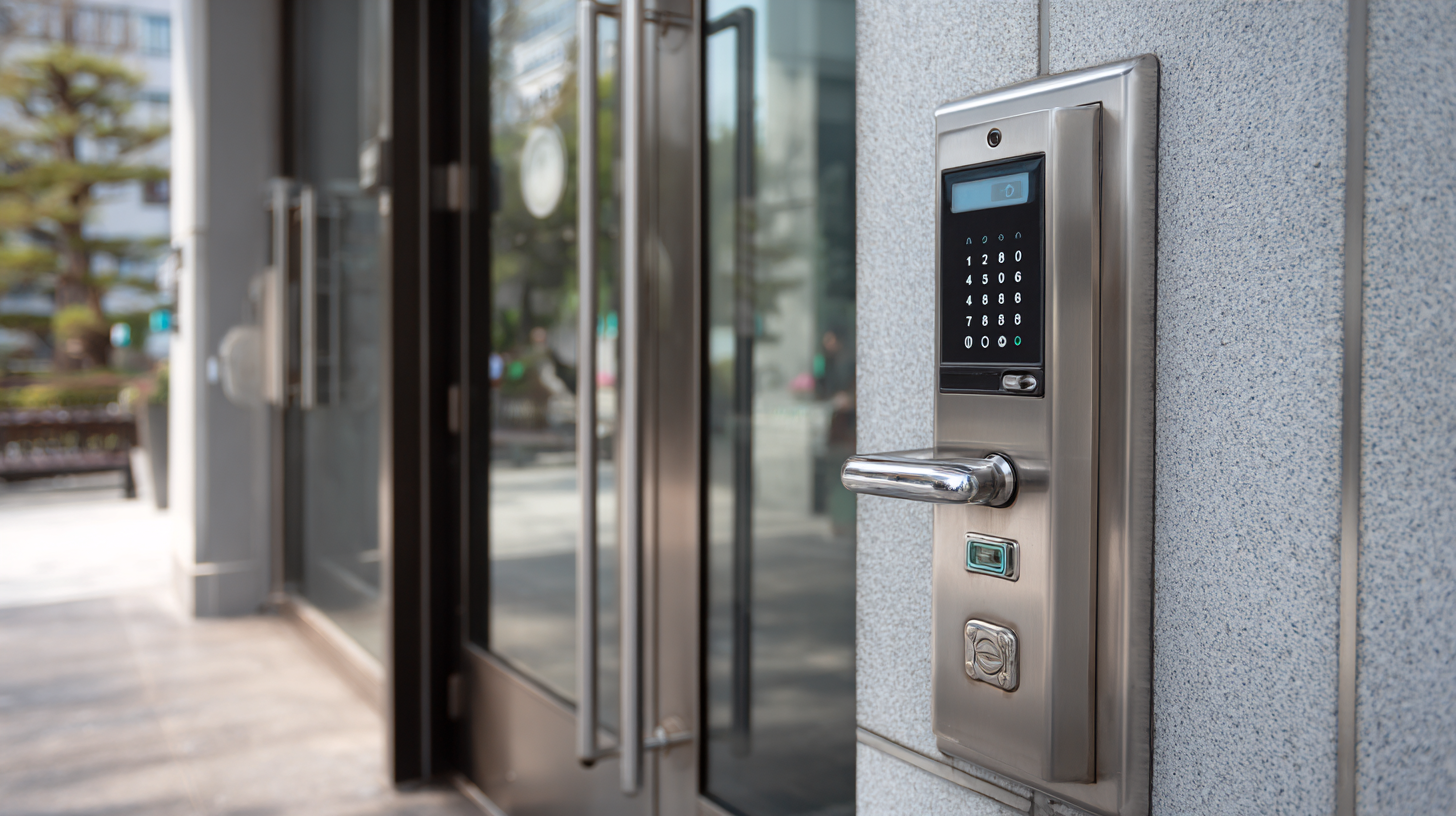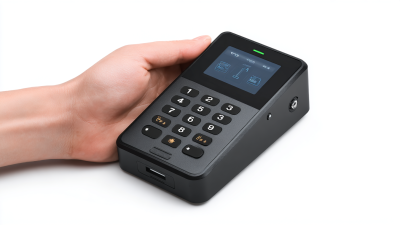How to Enhance Security with a Door Access Control System in Your Business
In today's rapidly evolving business landscape, security is paramount, making the implementation of a Door Access Control System more critical than ever. According to a report by MarketsandMarkets, the global access control market is projected to grow from $8.6 billion in 2020 to $11.6 billion by 2025, representing a compound annual growth rate (CAGR) of 6.3%. Organizations are increasingly recognizing the importance of controlling who enters their premises, as over 30% of businesses report incidents related to unauthorized access. A robust Door Access Control System not only protects physical assets but also enhances employee safety and reduces liability risks. By integrating advanced technologies like biometric scanning and mobile access, businesses can bolster their security measures and create a safer working environment. As such, adopting a comprehensive access control strategy is essential for safeguarding assets and ensuring operational integrity in today’s competitive market.

Understanding the Importance of Access Control Systems for Business Security
 Access control systems are essential for enhancing security in today’s business environments. According to a report by MarketsandMarkets, the global access control market is expected to grow from USD 8.5 billion in 2020 to USD 12.5 billion by 2025, reflecting an increasing recognition of the need for robust security measures. This growth is driven by the rising concerns over unauthorized access and the necessity to protect sensitive information and assets. Implementing an access control system allows businesses to regulate who enters their premises, ensuring that only authorized personnel can access critical areas.
Access control systems are essential for enhancing security in today’s business environments. According to a report by MarketsandMarkets, the global access control market is expected to grow from USD 8.5 billion in 2020 to USD 12.5 billion by 2025, reflecting an increasing recognition of the need for robust security measures. This growth is driven by the rising concerns over unauthorized access and the necessity to protect sensitive information and assets. Implementing an access control system allows businesses to regulate who enters their premises, ensuring that only authorized personnel can access critical areas.
Furthermore, a study from the Security Industry Association indicates that nearly 84% of organizations that use access control systems have reported a decrease in safety incidents. The ability to monitor and manage entry points not only minimizes security risks but also provides valuable data on employee movement and access patterns. By integrating advanced technologies like biometric scanners and mobile access, businesses can enhance their security infrastructure, ensuring a safer working environment while maintaining regulatory compliance.
Key Features to Look for in Door Access Control Systems
When selecting a door access control system for your business, there are several key features that can significantly enhance security.
One of the most critical elements to consider is keyless entry capabilities. This technology not only eliminates the need for physical keys, which can be easily lost or duplicated, but also allows for easy access management through PIN codes, fingerprints, or smart devices. Businesses can opt for advanced systems that integrate biometric authentication, providing a higher level of security by ensuring that only authorized personnel can enter restricted areas.
Another important feature is the scalability of the access control system. As your business grows, your security needs may change, necessitating an adaptable system that can be customized to include additional doors or advanced functionalities. Moreover, look for systems that offer real-time monitoring and reporting capabilities, allowing you to track access logs and respond swiftly to any security breaches. With the rise in demand for smart technology in security measures, investing in a comprehensive access control system can be a significant step in safeguarding your business assets effectively.
Implementing a Door Access Control System: Step-by-Step Guide
 Implementing a Door Access Control System can significantly enhance the security of your business by regulating who has access to sensitive areas. The first step is to assess your specific security needs. Identify the areas that require restricted access and determine the level of security required for each location. This evaluation will help you choose the right type of access control system, whether it's keycard entry, biometric scanners, or mobile credentials.
Implementing a Door Access Control System can significantly enhance the security of your business by regulating who has access to sensitive areas. The first step is to assess your specific security needs. Identify the areas that require restricted access and determine the level of security required for each location. This evaluation will help you choose the right type of access control system, whether it's keycard entry, biometric scanners, or mobile credentials.
Next, you’ll want to select the appropriate hardware and software components for your system. Invest in high-quality electronic locks along with a reliable management platform that allows you to customize access permissions and monitor activity. Installation is crucial; either enlist a professional or follow the manufacturer's guidelines to ensure that everything is set up correctly. Finally, create a user management plan. Train your staff on how to use the system efficiently, including issuing access credentials and updating security protocols as necessary. Through these steps, you can establish a robust door access control system that significantly improves your business's security infrastructure.
Best Practices for Maintaining and Upgrading Your Access Control System
When it comes to maintaining and upgrading your door access control system, following best practices is essential for ensuring the security of your business. According to a report by the Security Industry Association, 70% of security breaches are due to inadequate access control measures. Regular assessments of your system can help identify vulnerabilities and ensure compliance with industry standards.
Tips: Schedule quarterly audits of your access control system. This includes reviewing user access levels, checking for outdated hardware, and ensuring that software is up to date.
Additionally, consider investing in training for your staff. A survey by the Ponemon Institute revealed that 57% of data breaches occur because of employee negligence. Providing proper training can significantly reduce human error and enhance your overall security posture.
Tips: Implement a biannual training program that covers the latest access control technologies and security protocols for all employees.
Access Control System Security Levels
Training Employees on Access Protocols for Enhanced Security
Implementing a robust door access control system is crucial for safeguarding sensitive areas within a business, but equally important is the effective training of employees on access protocols. According to recent research, organizations that conduct regular security training enhance their employees’ information security awareness, significantly mitigating the risks of unauthorized access. For instance, a systematic literature review highlighted that organizations with structured training programs saw a 70% increase in employee compliance with access protocols, thereby preserving the confidentiality, integrity, and availability of essential assets.
Moreover, leveraging generative AI in employee training can further bolster security measures. AI-driven platforms can personalize training experiences, focusing on specific threats relevant to the organization—thus adapting in real-time to emerging cyber risks. The National Science Foundation's recent policy updates underscore the necessity of integrating research security training, pointing to an increasing trend where organizations must equip their workforce with the knowledge to detect and respond to security threats effectively. As cyberattacks grow more sophisticated, businesses must proactively engage in continuous training to keep pace with the evolving landscape of security threats.
How to Enhance Security with a Door Access Control System in Your Business - Training Employees on Access Protocols for Enhanced Security
| Employee Name | Role | Access Level | Training Completed | Last Access Date | Access Violations |
|---|---|---|---|---|---|
| John Doe | Manager | Full Access | Yes | 2023-10-01 | 0 |
| Jane Smith | Technical Support | Limited Access | Yes | 2023-09-25 | 1 |
| Alice Johnson | HR | Restricted Access | No | N/A | 0 |
| Bob Williams | Cleaning Staff | Basic Access | Yes | 2023-10-02 | 2 |
| Tom Brown | IT Specialist | Full Access | Yes | 2023-10-03 | 0 |
Related Posts
-

What Are Door Access Cards: Essential Insights for Global Buyers
-

Navigating Import Export Certifications for the Best Access Control Locks Explained
-

Top Strategies for Implementing an Effective Access Card System in Modern Workplaces
-

Ultimate Guide to Choosing the Best Access Systems for Your Global Procurement Needs
-

How to Choose the Right Access Control Card Reader Based on Security Trends and User Needs
-

2025 Trends in Door Security Assessing the Best Options for Your Home
- • HighpowerOne Touchscreen Controller • HighpowerOne Mobile Credential App
- Highpower Management System
- • Pushplate 100 PNZ
- • Pushplate 110 PNZ
- • Pushplate 120/140 PNZ
- • Pushplate 130/150 PNZ
- • Pushplate 200 PNZ
- • Pushplate 100
- • Pushplate 110
- • Pushplate 120/140
- • Pushplate 130/150
- • Pushplate 200
Mechanical Timers
Proximity ID Access Cards and Fobs
Proximity Card Readers
- • Proximity Reader P-300
- • Proximity Reader P-400
- • Proximity Reader P-500
- • Proximity Reader P-620
- • Proximity Reader P-640
- • Proximity Reader P-710
- • Proximity Reader P-900
- • Ranger Proximity Readers
- • Ranger Controls
- • Sure-Fi Wireless Interfaces
Smart Series JX Readers
Electromagnetic Locks
Highpower Power Supplies
• H505
• H512
Security Products Summary
